Cost-Effective Water Conservation
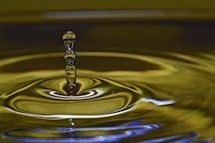
Water conservation is second in my list of green building's top 3 priorities. In Asheville and the Southeast region, energy use is most important, mainly due to our dependence on mountaintop mined coal combustion. Land disturbance, agriculture and industry need attention but this relates to home use.
Water + Energy = Hot Water
Water and energy use are connected. Saving energy reduces water pollution. Conserving water, reduces energy use. Coal-fired power plants consume lots of water and add unwanted heat to surface water. Mining, transporting and burning coal pollutes soil, streams, lakes and oceans. Natural Gas NG extraction pollutes ground and surface water effecting people's drinking water. Spending less money on energy, reduces these dirty environmental costs.
Cost-Effectiveness Starts with Hot Water.
Heating water is one of the biggest demands for energy in a home. This is my list of most cost-effective ways to reduce hot water usage, an important goal for improving the health of everyone's water.
Showerheads
2.5 GPM, our country's greatest conservation act of the past 20 years, has reduced the potential for savings but showerheads still represent one of the fastest paying investments in energy + water conservation, especially when compared to older or higher flow showerheads.
Newer options include High Sierra showerheads. They look puny but offer better performance with less flow. The patented technology is simple and trouble-free. Here is a thorough, outside blog review.
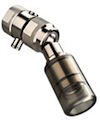 |
This model features a valve button to quickly adjust or stop flow during lathering and shaving which saves more water and energy. |
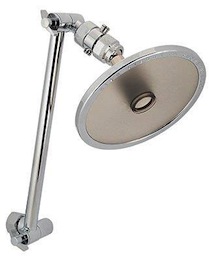 |
High Sierra's new models, mimic rainhead designs but promise higher performance with lower flows. Distance can be a notable factor in showerhead performance. Adjustable heads offer easy customization for different height users. |
Washing Machines
The #2 hot water user and most important appliance investment for energy + water conservation. ENERGY STAR offers a 2016 review of the most efficient washing machines available. If buying new, or replacing existing, this investment is solid. Extra effort spent sourcing more efficient models has big paybacks.
Drain Waste Heat Recovery
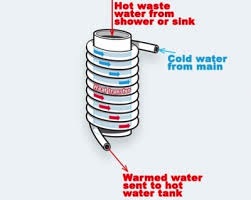 These are more of an energy saving feature but are directly tied to water usage. They make sense when the most used showers have a waste stack in a lower level. These simple systems dramatically improve the energy efficiency of showers, washing machines and dishwashers. Incoming cold water supply wraps the outgoing, warm waste pipe, capturing energy.
These are more of an energy saving feature but are directly tied to water usage. They make sense when the most used showers have a waste stack in a lower level. These simple systems dramatically improve the energy efficiency of showers, washing machines and dishwashers. Incoming cold water supply wraps the outgoing, warm waste pipe, capturing energy.
Drain waste heat recovery can have simple paybacks in the 3.5 to 8 year range for most residential systems depending on consumption and efficiency of the water heater. These systems have no moving parts and should have long lives. This investment can outperform solar PV and easily beats geothermal.
The rest of this list mainly applies to new construction, design or major renovation but some existing homes may benefit from adding a circulation system to an underperforming plumbing design.
Efficient Plumbing Design
- New construction offers enormous opportunity for a compact and efficient plumbing design.
- Small, plumbing footprints are an extremely cost-effective strategy for saving energy and water. They usually offer a better opportunity for drain waste heat recovery.
Lag time is how long it takes for hot water to arrive at the faucet after turning it on. It's a huge waste of water and energy and an inconvenience that wastes time. No one wants to wait for hot water. The faster that sinks and showers deliver hot water, the better.
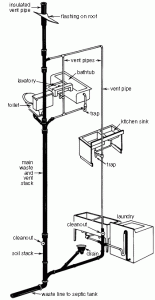
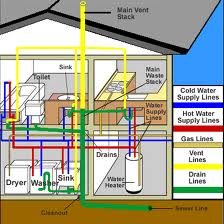
Smarter, smaller plumbing layouts save money on material and labor costs. Less connections and fewer roof boot penetrations reduce maintenance, and increase durability by preventing bulk water damage, #1 on our top 3 ways water destroys homes and buildings.
Insulate Hot Water Distribution. This can reduce lag time and energy use.
Plumbing Manifolds, Home Runs or More Efficient Distribution
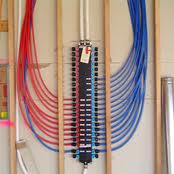
Dedicated pipes of a smaller diameter run to individual fixtures. Typical trunk and branch layouts have larger diameters which take longer to flush with hot water from the water heater. Smaller pipes have less water to flush but need dedicated lines for enough pressure. We find it tough to make cost-effective with the extra material and labor charges. A typical trunk and branch system can often be designed to be nearly as effective with reduced costs.
Hot Water Recirculation
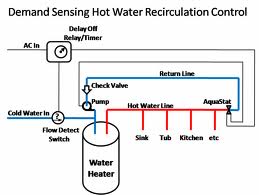
Circulating loops are more of a convenience but do save water. Most systems exist in big homes with lots of space between fixtures. Smaller plumbing footprints reduce or eliminate the need for recirculating hot water systems.
Most recirculation systems are continuosly circulating, a crime to the environment with wasted dirty energy costs. Circulating water continuously from the heater to the faucets wastes energy through the pump, water heater and air conditioner. These systems are usually exisit in oversized houses and result in ridiculous amounts of waste.
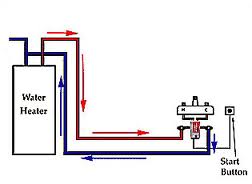
More efficient systems activate the recirculating pump just before hot water is needed. This can be done with a manual switch, timer, or motion detector. These simple controls combined with efficient pumps offer substantial energy improvements. They can also reduce maintenance needs.
This issue is heavily influenced by certain occupant behavior. Those that habitually turn water on and do other things while hot water is wasted down the drain could benefit more from recirculation or an adjustment in habits. This comes from a guy who habitually takes 20 minute hot showers but at least I enjoy it before goes down the drain and have made improvements in the water heating dirty energy use with my compost water heating system.
Indoor Water Use: Low Fruit
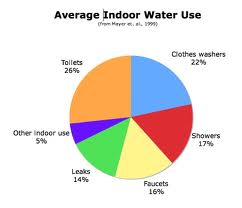
This represents an average, existing home. The large toilet consumption being an obvious target for gallons per flush restrictions. Leaky toilets deserve prompt attention to reduce leakage waste. Clothes washers stand out with the water + energy concerns. Its interesting that dishwashers are nearly immeasuable compared to the biggest volume users and are best chosen based on energy costs and cleaning performance.
Newer homes built to code begin to change this big picture.
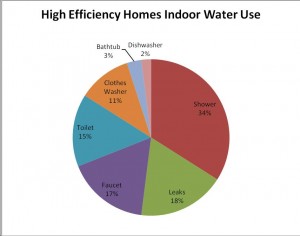
This is the average for newer, more efficient homes; new toilets, high-efficiency washing machines and low-flow fixtures. Interestingly, leaks become the second biggest source of water use indoors. Leak detection devices may be considered for homes looking to cut water use and reduce problems.
Most leakages are probably from the common issues associated with a toilet's upper tank. Learning to fix these simple problems or hiring a plumber, is extremely important for saving water.
These are the most cost-effective approaches for water conservation in the home. Hot water always offers the fastest fiscal and environmental payoffs. Existing homes should consider replacing older plumbing faucets and choosing the most efficient washing machines and dishwashers. Most new homes hidden opportunities are efficient plumbing footprints and drain waste heat recovery.
For those that garden or irrigate their landscape, outdoor water usually accounts for the biggest overall consumption of water. While its tougher to make cost-effective, rainwater catchment can be a good choice for many projects.
Springtime Builders is an Asheville green builder specializing in building science best practices.
Posted in Water Conservation


